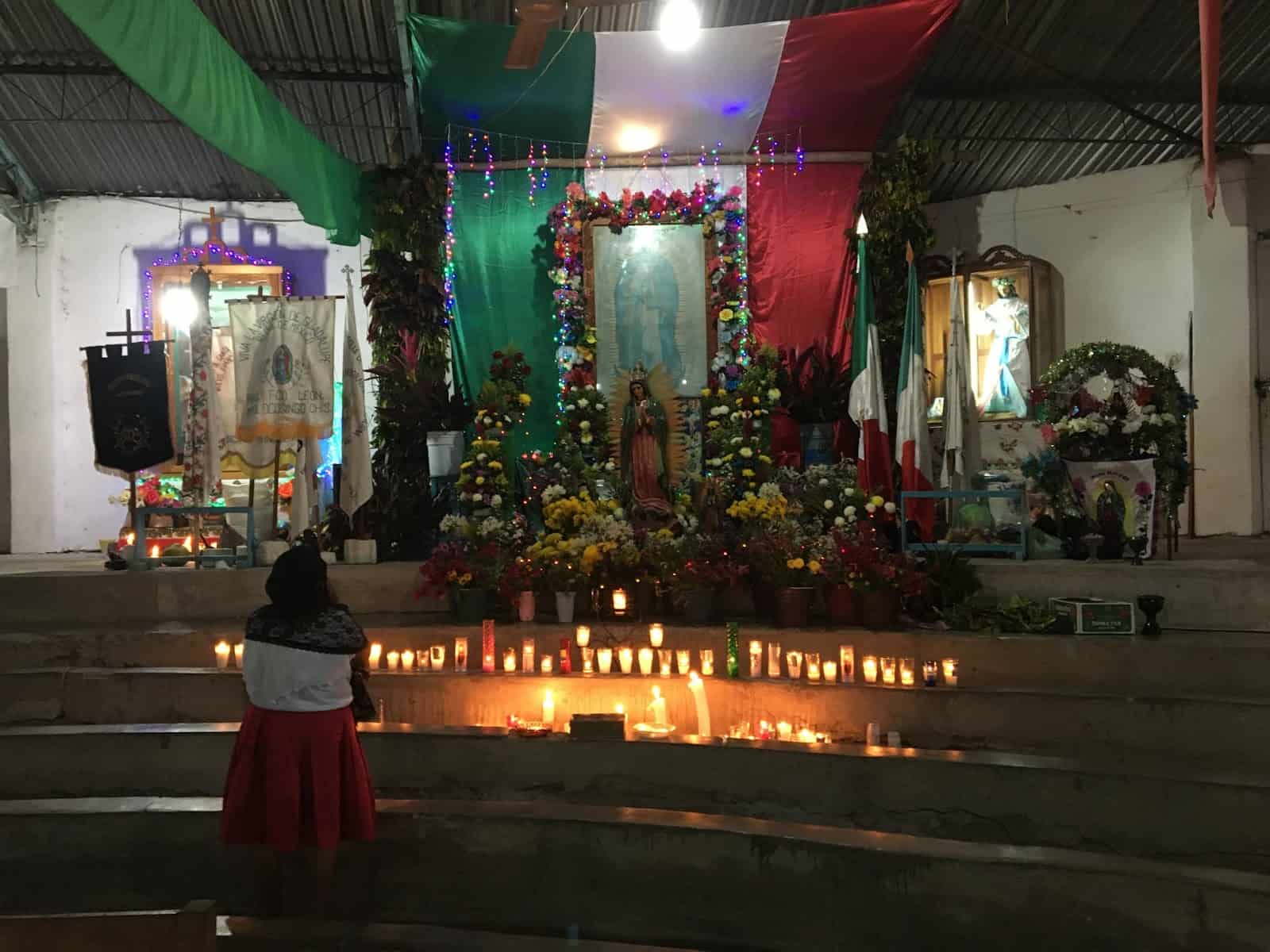A Natural Wonder
Lake Diamante lies deep in the tropical rainforests of eastern Chiapas, some forty miles from the Guatemalan border. The nearby eponymous village is inhabited by Tzeltal people, an indigenous group of Mayan descent that speak a distinct language from their Ch’ol and Zoques neighbors. The limited contact between Diamante and the outside world has resulted in a two-fold preservation: a preservation of the natural landscape and a preservation of the traditional lifeways.
But only a few years earlier, Lake Diamante teetered on the verge of ecological ruin. Trade with the metropolitan city of Palenque brought heavy detergents to the village and, as locals washed clothes and dishes in its azure waters, the health of the reservoir deteriorated. Thankfully, the people of El Diamante recognized the damage being done and changed course before it was too late. Wisdom and foresight prevailed. The ecosystem recovered.
This positive outcome for Lake Diamante is, unfortunately, exceptional. Many other indigenous communities where the Chiapas-based Mexican Jesuits minister have fallen into full-blown ecological crisis. We heard their sobering stories from the elders (taiks) during our ecological pilgrimage (antorcha ecológica) through the scattered villages that dot the region’s hilly terrain. This explainer uses the lens of what Pope Francis calls integral ecology —“a vision capable of taking into account every aspect of the global crisis… one which clearly respects its human and social dimensions” (LS §137)— to discuss what went right in Diamante and what went wrong elsewhere.
A Wounded Ecosystem
Led by a spirited group of Tzeltal and Ch’ol young people, our group of ecological pilgrims braved the elements and erratic drivers to walk through villages along the Santo Domingo River. We walked not only to celebrate Our Lady of Guadalupe, but also to raise awareness of the damage being done to the Earth, our common home. Over thin chicken soups and sweet cups of coffee, we spoke with the locals about how the once pristine rain forests were becoming, to use Pope Francis’s words, a “polluted wasteland full of debris, desolation and filth.”
Our group encountered a very receptive audience. Each village we passed through provided further evidence of biodiversity loss, drought, and desertification. The frustration was palpable as the locals discussed litter, extinctions of species of freshwater crabs and shrimp, overfishing, deforestation, exhausted soils, and declining milpa yields.
But one concern prevailed over all others. Time and time again the Tzeltal people voiced their concern over the polluted rivers and aquifers.
Water is deeply sacred to the Tzeltal people. On the sixth day of the pilgrimage, our group followed a faint trail to a spring near the village of Arroyo Granizo. The locals came out to meet us, sending off a barrage of sky rockets (trikis) whose blasts drowned out their hypnotic violin music and drumming. (Repetitive, trancelike music was a common feature of Tzetal religious festivals. Fireworks marked all sacred occasions; on Christmas eve, for example, Fr. Juan Pablo Orozco, S.J. and I accompanied scores of Tzeltales from the village of Lacanjá on an hour-long walk through the jungle to retrieve a child Jesus figurine. The fireworks were relentless).
As we arrived at the Arroyo Grainzo reservoir, the music stopped and we spent a long time in knelt, reverent prayer. Rising slowly, the elders prepared each of us a traditional corn-based drink called pozol made from its cool, clear waters and began to engage us in conversation.
You could feel the gravity shift as we discussed the state of the aquifers. For the elders, undrinkable pozol was emblematic of unsustainable lifestyles more generally. Polluted waters, they told us, opened markets for bottled soft drinks, resulting in an epidemic of diabetes and other diet-related illnesses. As food and drink became increasingly tied to a money economy, moreover, young people were forced to migrate in droves for remunerated work in cities, where cultural and language differences left them vulnerable to exploitation and violence. Our conversations in the autonomous villages along our pilgrimage route made it clear that the stakes of aquifer protection for the Tzeltal people couldn’t be higher: As the water goes, so goes the community.
The Tzeltal people’s resistance to outside influence has deep roots. The Zapatista Army of National Liberation (EZLN) emerged in 1983 from social movements within the Lacandon Jungle, a region that englobes Diamante, our ecological pilgrimage route, and several other villages where the Mexican Jesuits minister. On January 1, 1994, the EZLN made headlines when —in search of land protections, healthcare, and autonomy— they broke out in an armed revolt against the Mexican government. The Catholic Church brokered a ceasefire twelve days later, but not before over 150 people were killed.
Although the conflict between the indigenous communities and the Mexican government had cooled in the three decades since NAFTA’s ratification, the Zapatista independence movement remained strong. Autonomous gathering halls and medical clinics —often colorfully decorated with EZLN imagery— were common features of the villages we visited. It was clear that the tensions were very much still simmering.
The water supply was a common talking point given by the Zapatistas to explain their resistance to Northern hegemony. Several Tzeltal women we spoke with in autonomous villages (comunidades en resistencia) claimed that the government was willfully contaminating the drinking water to open new markets for US-based beverage companies. Such tactics have been reported across Latin America, leading Pope Francis to write in Querida Amazonia that “certain businesses, for a quick profit, appropriate lands and end up privatising, even potable water” (QA §14). In such situations, Francis continues, “economic relationships are unduly altered and become an instrument of death” (idem). Opening to the unfettered market economy, we heard time and again, was a devil’s bargain. Gross domestic product grows, but traditional lifeways are forever lost.
Integral Ecology in El Diamante
How did Lake Diamante change course and protect its life-giving water? Three themes emerged from my conversations with the locals that help explain this exceptional outcome.
First, the Tzeltal people of El Diamante exhibited a remarkable degree of social cohesion. Following prayer at the local Catholic church —conducted entirely in Tzeltal by the Mexican Jesuits and an indigenous deacon— the community gathered for a meal of chicken soup, beans, and corn tortillas. The bonds of kinship expressed in the Eucharist were deepened in the communal meal immediately following the liturgy.
These meals were much more than quaint niceties. My history professor at ITESO, the Jesuit university in Guadalajara, once remarked that large swaths of Mexico have passed from the calpulli, to the cofradía, to the cártel—that is, from the pre-Columbian polity, to the Catholic sodality, to the panoptic drug ring. A breakdown of social bonds (tejido social) spells violence and ecological destruction. Communal gatherings like those in the Diamante parish hall following liturgies, strengthened the bonds of solidarity and helped the people protect the lake with “one heart and one mind” (Acts 4:32).
Second, the people of El Diamante cultivated a healthy detachment from the allure of economic accumulation. When I was there in December of 2019, the fine for washing dishes in the lake was $5000 pesos or about $250 USD—an enormous sum considering the ubiquity of subsistence farming and the limited interaction with the larger Mexican economy.
Fines were collected by a public police force serving one-year, obligatory, unpaid terms. Importantly, these funds were not saved and accumulated, but were instead spent entirely on lavish public celebrations held on the Feast of the Holy Cross. This spending designation avoided selfish infighting over the funds, limited inequality, strengthened community ties, and promoted a spirit of unpossessive equanimity reminiscent of Walter Bruggemann’s essay “The Liturgy of Abundance, the Myth of Scarcity.”
Third, and finally, the locals regarded Lake Diamante as a sacred space, a natural treasure irreducible to its economic value. It is no coincidence that the solemn processions of Holy Week were celebrated along its shores. They understood, as the Catechism states, that “The beauty of creation reflects the infinite beauty of the Creator” (CCC 341) and were inspired by the lake’s splendor to accept a measure of inconvenience to protect its pristine, life-giving waters for future generations.
“Indigenous communities and their cultural traditions,” Pope Francis writes, “are not merely one minority among others, but should be the principal dialogue partners, especially when large projects affecting their land are proposed” (LS § 146). My time in Chiapas underscored the wisdom of these words. Not all of this is transferable to the industrialized world. Lake Diamante is not the Los Angeles River. But the integral ecology of the Tzeltal people suggests modest steps we can take towards a more sustainable future. By strengthening community ties, prioritizing the common good over individualistic gain, and cultivating attitudes of awe towards nature, we grow more capable of collaborating, with Gospel depth, for the protection and renewal of God’s Creation. Let us learn from indigenous communities and their cultural traditions. Let us come to the water.
———
To learn more about the Jesuits efforts in integral ecology, consult the latest edition of the Society of Jesus’s Promotio Iustitiae, edited by the Secretariat for Social Justice and Ecology.
For an overview of the social apostolates of the Mexico Province, visit the Jesuit university of Guadalajara’s website.
Click here to donate to the Tzeltal-Jesuits fair trade cooperative in Bachajón, Chiapas.


